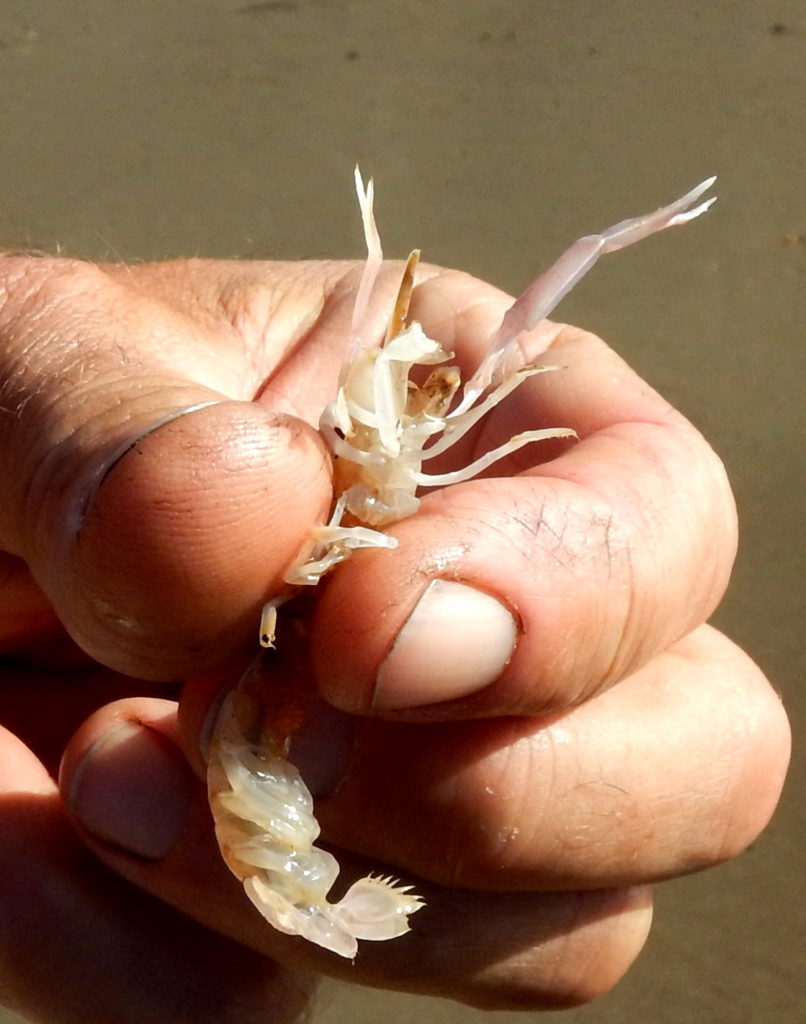Published in the Ocean Watch column, Honolulu Star-Advertiser © Susan Scott
April 29, 2017
BUNDABERG PORT MARINA, QUEENSLAND, AUSTRALIA >> I’m back in Australia getting our sailboat Honu ready for another Great Barrier Reef adventure.
To answer a common question, no, we do not sail Honu back and forth between Hawaii and here. At Honu’s average speed of 5 miles per hour, it would take 50 days, minimum, to sail the 6,000 miles between Hawaii and Australia. It’s a long, hard voyage that for us is unfeasible, timewise. So, for now, the boat stays Down Under.
 Freshwater crayfish, or yabbies as they are called in Australia, serve as
Freshwater crayfish, or yabbies as they are called in Australia, serve as
bait for fishermen. Yabbies are also delectable to stingrays, which smash the
burrowed tunnels the yabbies live in, and also to the fish that follow the stingrays.
©2017 Susan Scott
That means, of course, Honu is subject to cyclones. To answer another question, Cyclone Debbie did not strike this marina, and Honu survived the torrential rains unscathed.
Because Australia has marine life I don’t know, customs I’ve not seen and language I don’t always understand, during my trips here I have my own endless questions. A recent one was: Why are people sticking hand-pump suction tools into the sand at low tide?
When I asked a friendly angler, he said, “I’m pulling up yabbies.”
I’ve been in Australia enough to know that yabby is another name for edible freshwater crayfish. (Spiny and slipper lobsters are also called crayfish here.) The beach, however, was on the ocean and the suction pipe was small.
“To eat?” I said.
“No, for bait. Look here.”
He stabbed the wet sand, pulled back the plunger and came up with a cream-colored, soft-bodied creature about 3 inches long. “There’s a yabby,” he said, handing it to me. “That big claw means it’s a male. Careful, it can give you a sharp nip.”
It looked like a shrimp to me, but then that’s the problem with common names. (Latin names have their own issues — call a yabby a Callianassa australiensis and the conversation is over.)
Australia’s bait yabbies are found along its east coast where they live in the sand between the high and low tide lines. At low tide, fishers dig near telltale holes in the sand, but that’s no guarantee the creature is there. Each adult yabby has three or four holes joining its main burrow, which can be 2 feet down.
Another question I’ve had for years in Australia is why the sand on some beaches during low tide is pocked with dozens, sometimes hundreds, of perfect stingray outlines including their long tails.
It’s yabbies again. During high tide, the rays swim over the sand flats and “puddle” the sand with strong beats of their powerful pectoral flaps. This collapses yabby burrows, bringing the now-homeless creatures to the sand’s surface. Besides being meals for the rays, the uprooted yabbies also get eaten by fish freeloaders that have followed the rays.
Every time I take a walk here in Australia, I end up with so many wildlife questions, I have to write them down. And I’m still in the marina.